Devis and Devatas (gods) are prevalent throughout India. The figure is a mind-blowing 330 million, no less! As a result, it is not surprising that the nation is awash in sacred temples and shrines. The remnants of India’s rich Hindu mythology are adorning a number of pilgrimages that are dispersed across its broad borders. The Char Dham Yatra occupies a significant position among these.
The Char Dham Yatra, which translates literally to “pilgrimage to the four abodes,” refers to the four holy pilgrimage destinations in India: Badrinath (Uttarakhand in the north), Rameswaram (Tamil Nadu in the south), Puri (Odisha in the east), and Dwarka (Gujarat in the west).

They are frequently confused, though, with the Devbhoomi, the four holy sites in Uttarakhand. These Char Dhams—Badrinath, Kedarnath, Yamunotri, and Gangotri—are a part of the Chhota Char Dham Yatra, a short circuit of four stops.
Table of Content:
- About Char Dham
- A true Indian Essence
- The four associated places of the Char Dhams
- Badrinath Dham:
- History
- Aarti Timing
- Places near Badrinath to visit.
- Dwarkadhish Temple:
- History
- Aarti Timing
- Places near Dwarka to Visit
- Rameshwaram Temple:
- History
- Arti Timing
- Places near Rameshwaram to Visit
- Jagannath Puri:
- History
- Aarti Timing
- Places near puri to Visit
- When should you go for Char Dham Yatra?
About Char Dham
The Char Dham is a collection of four pilgrimage locations in India. The name means “four abodes.” Visiting to these locations are said to aid in achieving moksha. (salvation). Badrinath, Dwarka, Puri, and Rameswaram are the four Dhams. Every Hindu is supposed to travel to the Char Dhams at least once in their lives.
According to Adi Shankaracharya, four Hindu pilgrimage locations make up the Char Dham. These primary “dhamas” are Lord Vishnu shrines, whereas Rameshwaram is a Lord Shiva shrine.
(1) The Dham of Satyuga is Badrinath in Uttarakhand, and all the “dhamas” are connected to the four eras.
(2) Rameswaram, Tamil Nadu, the Dham of the Tretayuga
(3) Dwaparayuga Dham in Dvaraka, Gujarat.
(4) Jagannatha Puri in Odisha, a Dham of the Kaliyuga
A true Indian Essence
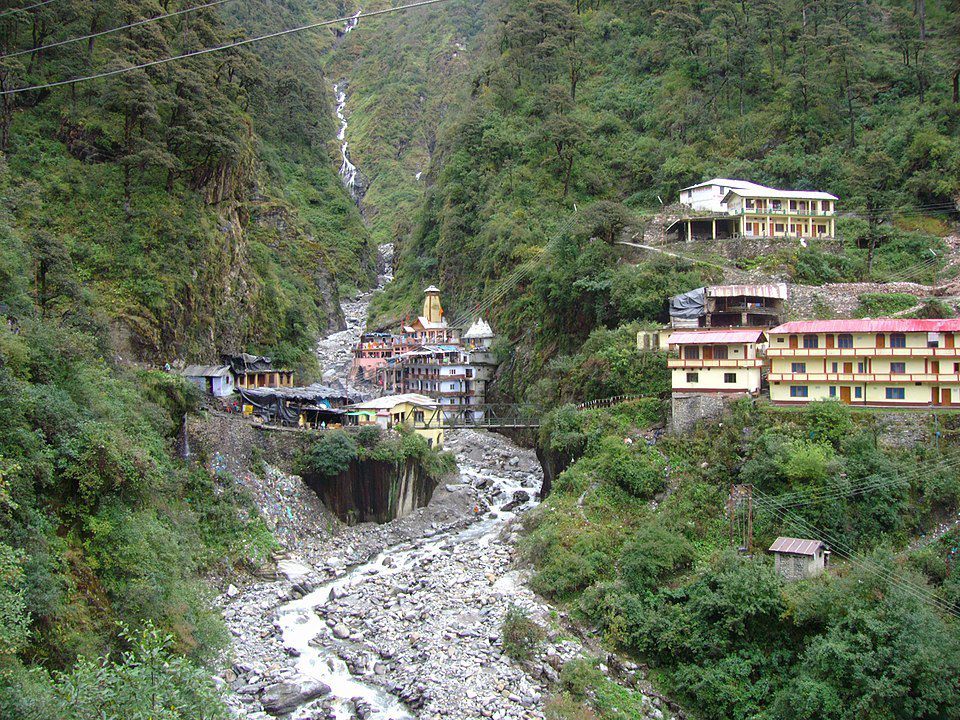
The Char Dham yatra, sometimes referred to as the “Mahaparikrama,” is a prime illustration of “one India,” capturing the nuances of several religions, spirituality, and national unity.
To complete the Char Dham Yatra, one must go to all four corners of India, each of which has its own unique culture and traditions. Additionally, because of their interdependence, each of the four Dhams would be incomplete without highlighting the customs and cultures of the others.
South India is the homeland of the head priest who serves Badrinath. South India is also the source of the sandalwood and silk donated to Lord Badrinath. Similarly, a priest from north India offers prayers at Rameswaram. It is necessary to present northbound Ganga water to the Shivling in Rameswaram.
It’s also held that Lord Rameswaram worship is essential to the Banaras Yatra. What other notion may serve as a more emphasized illustration of how to uphold the values of togetherness in such a diverse nation than the char Dham yatra?
The four associated places of the Char Dham
The idea of Hari’s (Vishnu) and Har’s friendship is another key theme of the Char Dham Yatra (Shiv). Lord Shiva and Lord Vishnu can be seen next to one another in all four Dhams. There are four pairings of Hari and Har at the four Dhams: Badrinath- Kedarnath, Rangnath Swami- Rameswaram, Dwarka- Somnath, and Puri- Lingaraja Temple.
The Char Dham
1. Badrinath
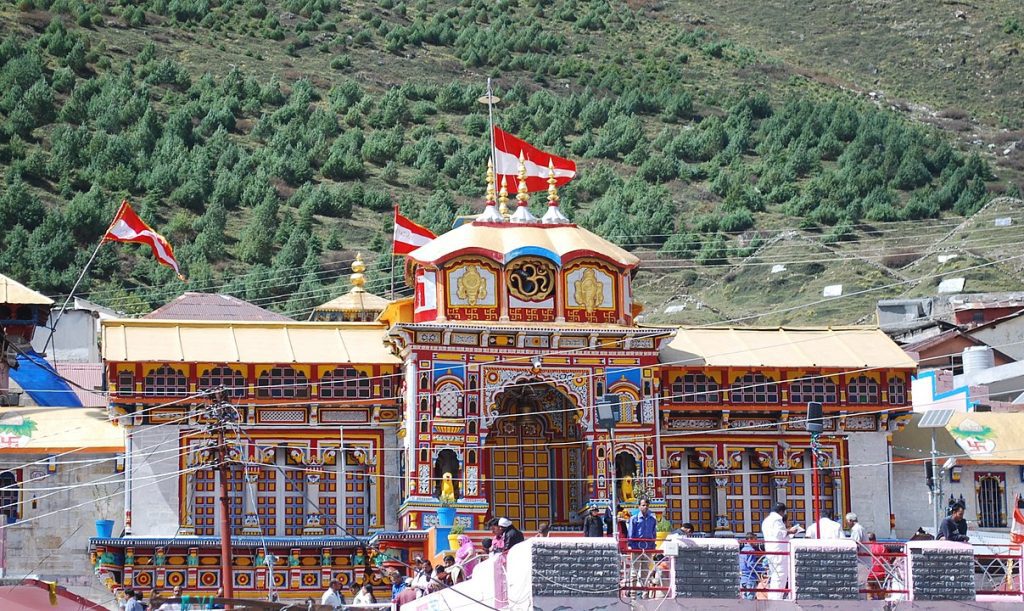
The town of Badrinath is located in the Garhwal hills of the modern-day Indian state of Uttarakhand, between the Nar and Narayana mountain ranges, on the banks of the Alaknanda River. The primary deity in this place is Lord Vishnu, who is worshipped as Badrinarayan.
It is ideally positioned 3,415 meters above sea level in the Garhwal Hills. From Kedarnath, the trip takes two days.
The temple is one of the 108 Divya Desams, or holy shrines for Vaishnavas, that are devoted to Vishnu, who is worshipped as Badrinath. Due to the harsh weather in the Himalayan region, it is only open for six months of the year (from the end of April to the beginning of November). With 2.8 million (28 lakh) visits in just two months in 2022, it is one of the most popular pilgrimage sites in India.
History:
Some sources claim that the temple was revered in some way during the Vedic era. Up until the 8th century, the temple was a Buddhist shrine, but Adi Shankara brought it back to life and turned it into a Hindu temple. The argument is based on the temple’s architecture, which is similar to a Buddhist vihara (temple), and the colorful exterior, which is unusual for Buddhist temples.
According to other versions, Adi Shankara founded it as a pilgrimage place in the ninth century. Between CE 814 and CE 820, Shankara is thought to have lived there for six years. He spent six months living in Badrinath and the remaining twelve months in Kedarnath.
Because the Tapt Kund, a group of hot sulphur springs just below the temple, is thought to have healing properties, many pilgrims think that taking a bath in the water is required before visiting the temple. While the outer temperature is normally below 17 °C (63 °F) year-round, the springs have a constant temperature of 55 °C (131 °F). [4] The temple’s two ponds have the names Narad Kund and Surya Kund.
Opening and closing time: Every year, in the months of April and May, the Badrinath temple opens, and it closes for the winter in the third week of November. As a result, the Joshimath Narsimha temple continues to offer Badri Vishal prayers throughout the six months the temple is closed each year.
Aarti Timing: Mangal Aarti is performed at 4:30 AM, and Shayan Aarti is performed at 8:30 PM.
Places to Visit near Badrinath Temple:
The holy location For religious folks, Badrinath is their final goal. By traveling to a variety of holy locations close to Badrinath Temple, you can enhance your Badrinath Darshan Yatra experience. Among the well-known locations close to Badrinath are
- Tapt Kund: The distance from the bus stop is 1 kilometer. This is a naturally occurring hot spring close to the Alaknanda river that is thought to be Lord Agni’s residence. The majority of pilgrims bathe in Tapt Kund’s sacred water for therapeutic purposes.
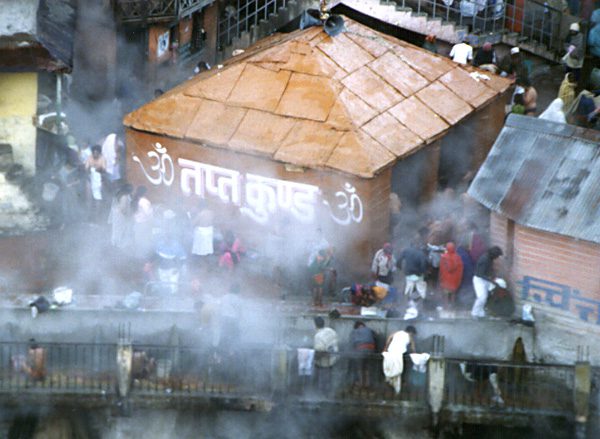
- Charan Paduka: 3 kilometers from the Badrinath Temple, Paduka is a beautiful location where it is thought that Lord Vishnu made his first stay on earth. His footprints are visible on a 3380-foot-high rock.
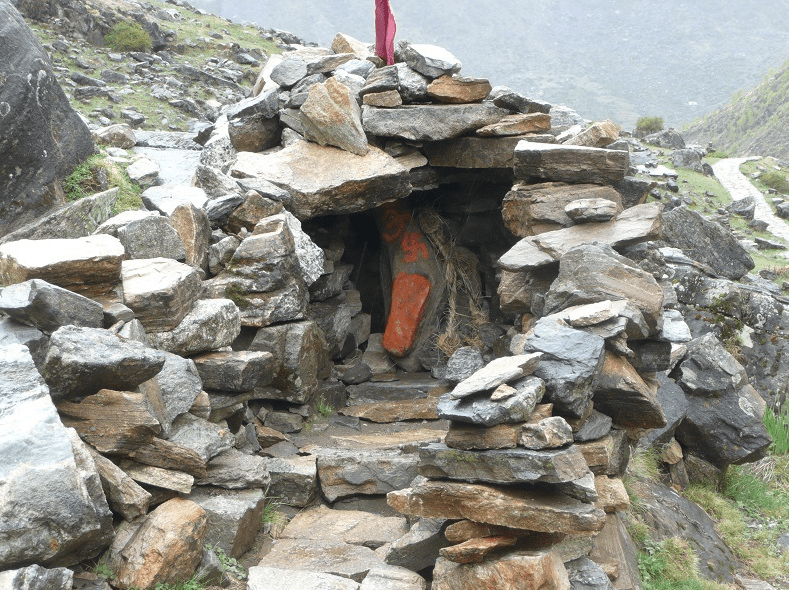
- Bheem Pul: This natural stone bridge, which lies 4.8 kilometers from Badrinath Dham, is thought to have been built by Bheem, one of the Pandav brothers, to cross the Saraswati River.
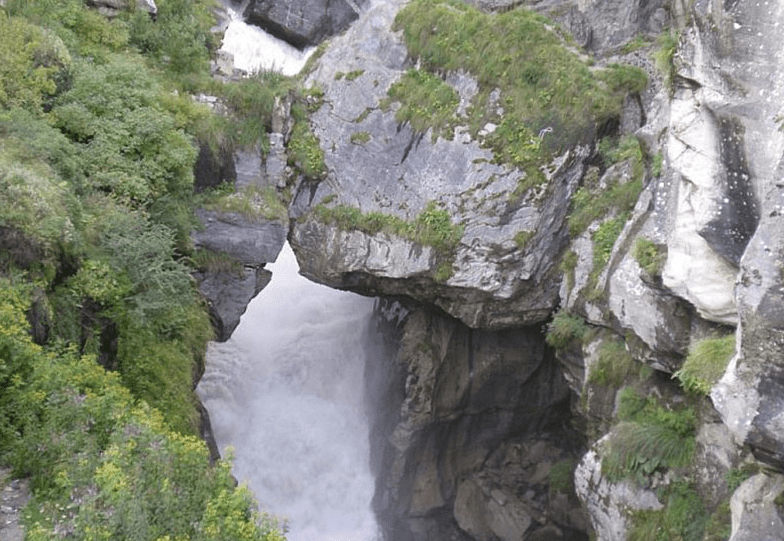
2. Dwarkadhish Temple
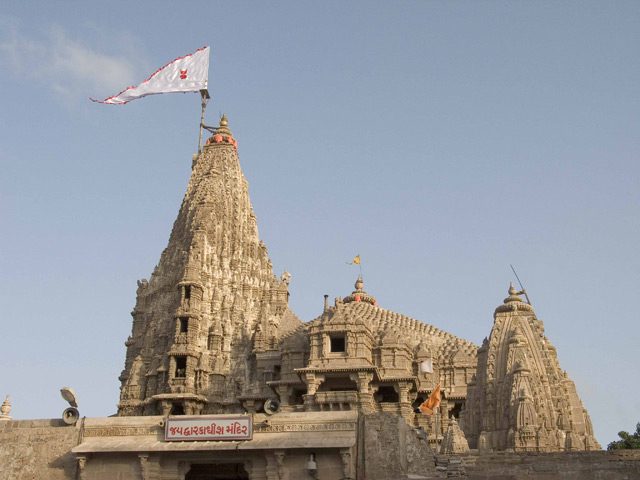
The Dwarkadhish temple commonly referred to as the Jagat Mandir and often spelled Dwarakadheesh, is a Hindu shrine to Krishna. This temple honors Krishna as the “King of Dwarka,” or Dwarkadhish, god.
The temple is located in Dwarka, a city in Gujarat. The 72-pillared, five-story building’s Jagat Mandir or Nija Mandir is its primary shrine. The oldest date for the construction of the ancient temple is 200 BCE, according to archaeological studies.
In the 15th and 16th centuries, the temple underwent expansion and restoration.
The sun and moon are shown on the flag atop the temple, which is thought to be a sign that Krishna will remain there as long as the sun and moon exist on Earth. The emblem does not change even though the flag is changed up to five times each day. The temple has 72 pillars supporting its five stories. The temple’s spire is 78.3 meters tall. The limestone used to build the temple is still in immaculate shape. The temple displays well-detailed sculptures.
The temple has a pair of entrances. “Moksha Dwara” is the name of the major entryway (the north entrance) (Door to Salvation). One can access the main market via this entrance. The “Swarga Dwara” entrance is located on the south (Gate to Heaven).
History:
The Gujarati town of Dwarka has a long history, and the Mahabharata epic refers to it as the Dwaraka Kingdom. It is said that the town, which is situated on the banks of the Gomti River, served as Krishna’s capital in legend.
buildings being late medieval, according to evidence including a stone block with writing, the way the stones were prepared to reveal that dowels had been used, and an investigation of anchors found on the site. Coastal erosion most likely destroyed what once served as a historic harbor.
Hindus have the view that Vajranabh, Krishna’s great-grandson, built the first temple over his residence. In 1472, Sultan Mahmud Begada demolished it.
Built in the 15th and 16th centuries, the modern Chaulukya-style temple. The temple has dimensions of 27 by 21 meters, a length from east to west of 29 meters, and a breadth from north to south of 23 meters. The temple’s highest summit measures 51.8 meters high.
Aarti Timing: Abhishek and Aarti are consistently performed throughout the day.
Mangla Aarti 06:30 A.M
Abhishek Pooja 08:00 A.M
Shringar Aarti 10:30 A.M
Sandhya Aarti 07:30 P.M
Shayan Aarti 08:30 P.M
Places to visit near Dwarka Temple:
There are many incredible places to visit in Dwarka where you can have fun and enjoy everything you have been missing out on in your regular life. Dwarka, regarded as the birthplace of Lord Krishna, is located on the western peninsula of the Indian state of Gujarat.
- Dwarka Beach: It is regarded as one of the top destinations in Dwarka to enjoy yourself with your loved ones in the evenings and the mornings. The city is not far from the seashore.
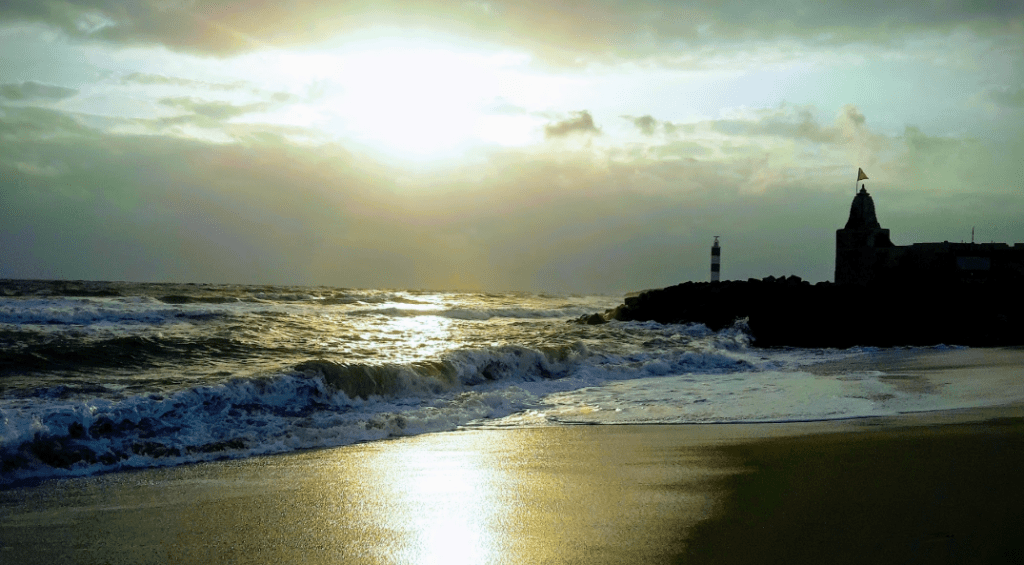
- Rukmini Devi Temple: The Rukmani Devi Temple in Dwarka is one of the most significant places of worship for visitors to the city. It is also a tourist attraction because it is entirely dedicated to Lord Krishna’s bride.
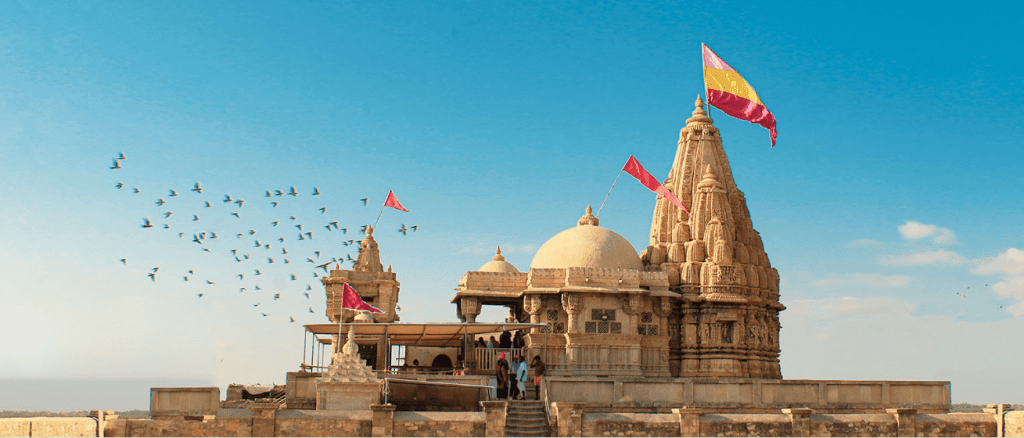
- Sudama Setu: The Setu is named for Sudama, Lord Krishna’s childhood pal. The current bridge is a suspension bridge that has advanced to become one of the spectacular architectural wonders in the city of Dwarka and is regarded as one of the top locations to visit in Dwarka.
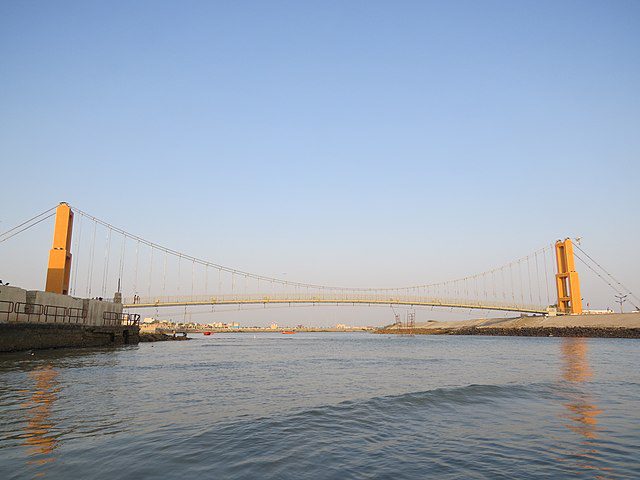
- Gomti Ghat: According to legend, the River Gomti is none other than the River Ganges, which originates in heaven. Another popular destination in Dwarka is The Gomti, which is where the powerful Gomti River meets the even more powerful Arabian Sea. To cleanse themselves of negative karma, pilgrims enjoy taking a holy bath in the ghats. To see the divine aarti, it’s a lovely location to visit in the evening.
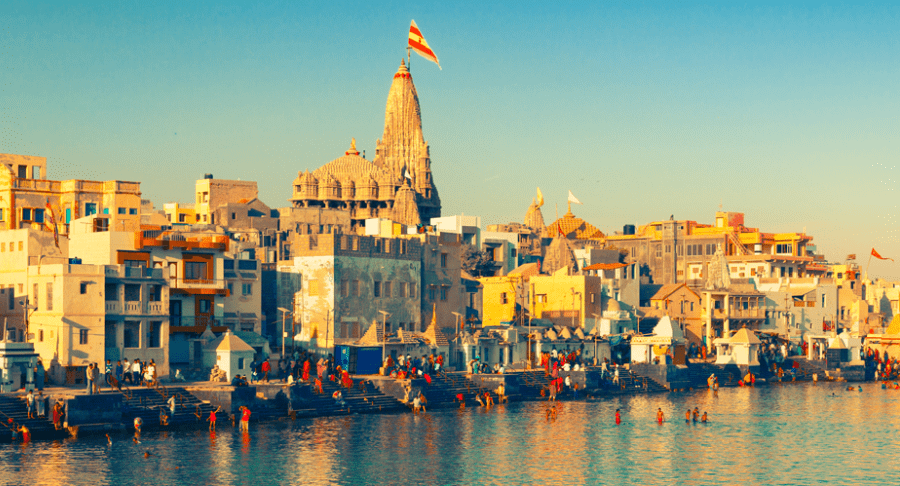
- Gayatri Shaktipeeth: Five kilometers separate Gayatri Shakti Pith from Dwarka. During the Dham yatra, devotees flock here to pray to Maa Gayatri. On the day of the founding, you are welcome to visit this place of worship to see the unique Annakut.
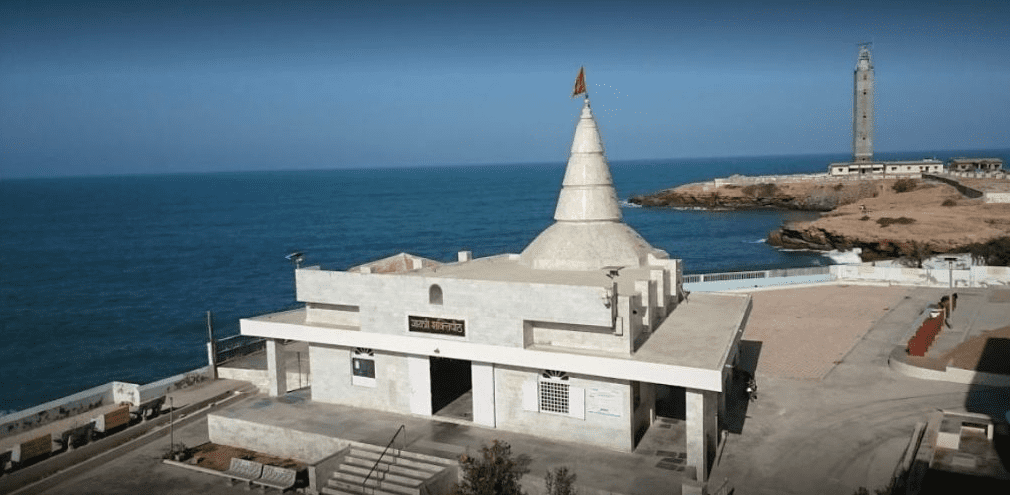
3. Rameshwaram
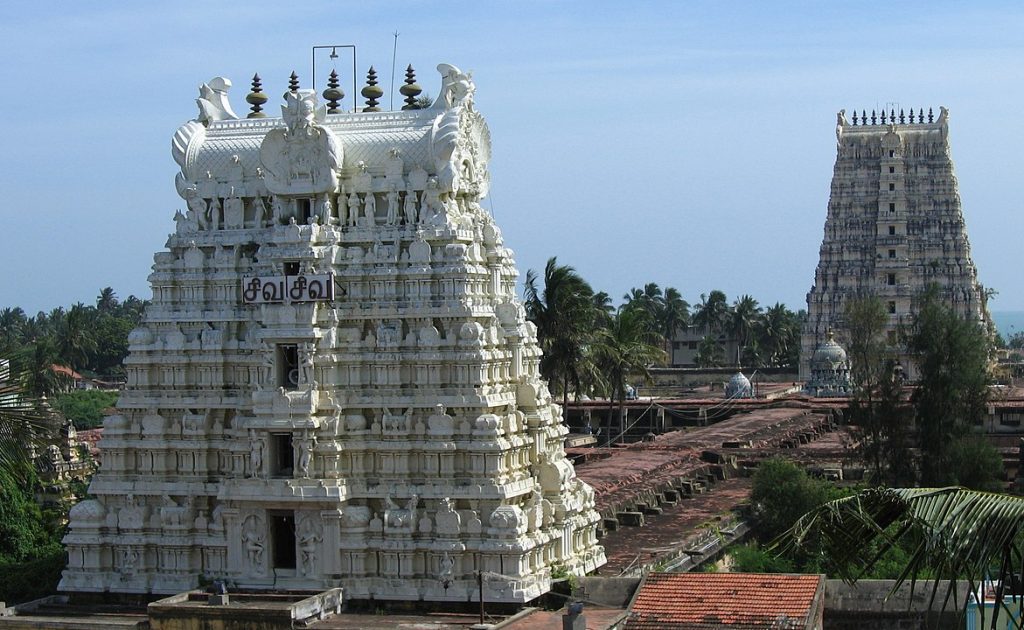
Rameswaram, a Sanskrit epithet of Shiva, the main deity of the Ramanathaswamy Temple, means “Lord of Rama” (Rma-varam) in English. The Hindu epic Ramayana claims that Rama, the seventh manifestation of the god Vishnu, pleaded to Shiva here to atone for whatever transgressions he may have made while fighting the evil king Ravana in Sri Lanka.
According to the Puranas (Hindu scriptures), Rama, his wife Sita, and his brother Lakshmana installed and worshipped the lingam (a famous emblem of Shiva) here on the advice of the sages to atone for the sin committed by Brahmahatya when he killed the Brahmin Ravana. Rama needed a lingam to worship Shiva and asked, Hanuman, an incarnation of Shiva, to bring one from the Himalayas. Sita constructed a replica of the lingam in the sanctum of the temple out of sand from the local shoreline because it took longer to transport the original.
The original Ramayana, written in yudha kanda and written by Valmiki, provides strong support for this story. The Ramsetu bridge is said to have been constructed by Rama near Sethu Karai, 22 km before the island of Rameswaram, and it extended to Dhanushkodi in Rameswaram until Talaimannar in Sri Lanka.
History:
The Ramanathaswamy Temple and the island’s use as a stopover for travelers heading to Sri Lanka (historically known as Ceylon) are central to Rameswaram’s history. Tevaram, the Tamil works on Shiva written in the seventh and eighth centuries by the three notable Nayanars (Saivites), Appar, Sundarar, and Thirugnanasambandar.
Rajendra Chola I, a Chola monarch (1012–1040 CE), briefly had authority over the town. The Jaffna dynasty, which ruled the island from 1215 to 1624 CE, claimed to be the Setukavalan, or guardians of Rameswaram. Hinduism was their official religion, and they gave the temple substantial donations. On their coins and in their inscriptions, Setu was used to indicate the dynasty.
This is a very well-known pilgrimage site because Lord Shiva is said to reside here until the end of time. According to mythology, Lord Rama asked the Supreme to stay forever at the holy site so that humanity could benefit from his pure presence. During the Maha Shivratri season, a large number of people of all faiths come to this location to honor Lord Shiva, make offerings, and receive his blessings.
Aarti Timing:
Palliyarai Deepa Aradhana 05:00 A.M
Spadigalinga Deepa Aradhana 05:10 A.M
Thiruvananthal Deepa Aradhana 05:45 A.M
Vila Pooja 07:00 A.M
Kalasanthi Pooja 10:00 A.M
Uchikala Pooja 12:00 P.M
Sayaratcha Pooja 06:00 P.M
Arthajama Pooja 08.30 P.M
Palliyarai Pooja 08:45 P.M
Places to visit near Rameshwaram Temple:
1. Jada Tirtham:
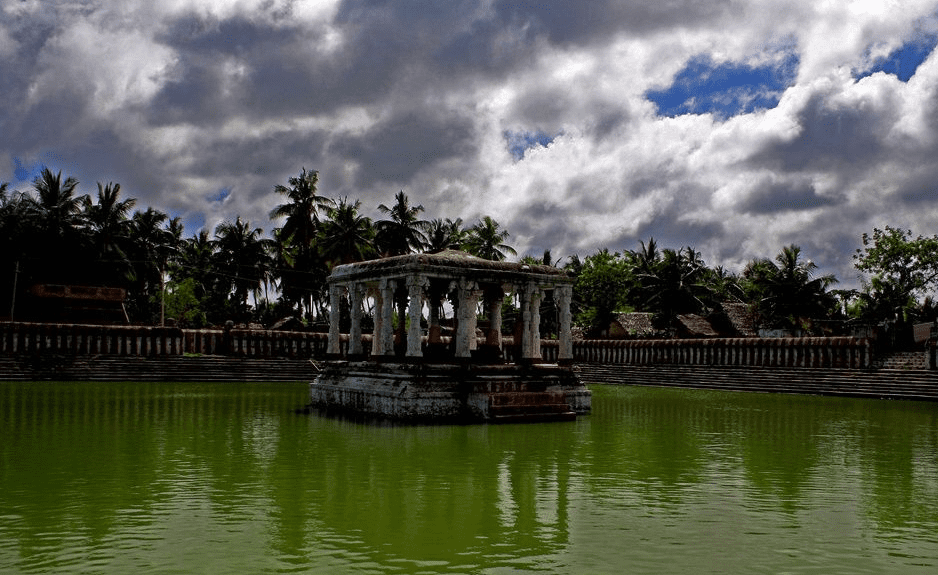
64 Tirtham, which is located on and around the island, is home to Rameshwaram, the holy land. Ancient texts inscribed in the religious Hindu sacred language “Devnagri” include these tirthams. The majority of them relate to celestial themes found in the Ramayana.
To atone for their previous sins, visitors to Rameshwaram bathe in this holy water. Rameswaram’s Jada Theertham is fascinating. On the way to Dhanuskodi, another well-liked attraction in Rameshwaram, you can find Jada Tirtham.
2. Agnitheertham:
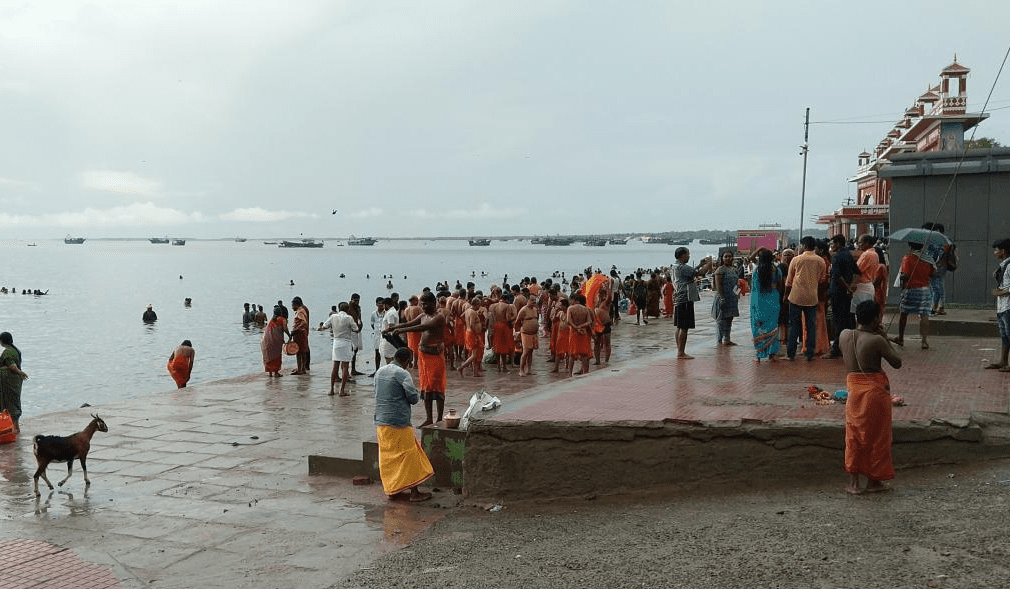
Rama allegedly worshipped Ruler Shiva to atone for his sins by defeating Ravana, and Agnitheertham is said to be 2 km from Rameshwaram Railroad Station. It is one of the most important locations to see while in Rameshwaram. With its enormous gate-like constructions, this theertham invites worshippers and visitors to dip themselves in the water to wash away their sins. It is located right on the shoreline.
Agniteertham is one of the most popular tourist destinations in Rameshwaram because it offers one of the most stunning views of the skyline and the ocean’s horizon while listening to chanting, reverent prayers, and the scent of incense sticks.
3. Five-faced Hanuman Temple:
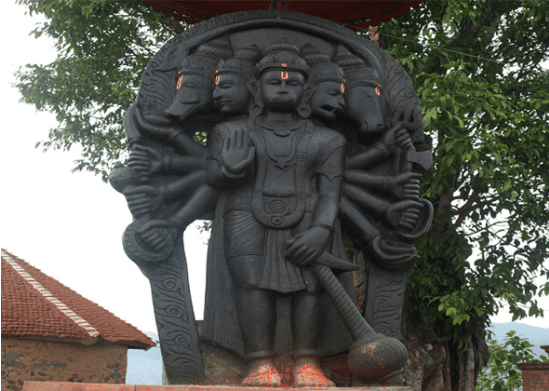
The Panchmukhi Hanuman Temple, also known as the five-faced Hanuman Temple, is a Hanuman shrine located 2 km from the Sri Ramanathaswamy Sanctuary in Rameshwaram. The temple stands out in Rameswaram’s bustling streets thanks to its off-white tint and tall stature. It is thought that Lord Hanuman revealed his five faces here, making this location immensely sacred and one of Rameswaram’s most prominent tourist attractions.
4. Annai Indira Gandhi Road Bridge Pamban Bridge:
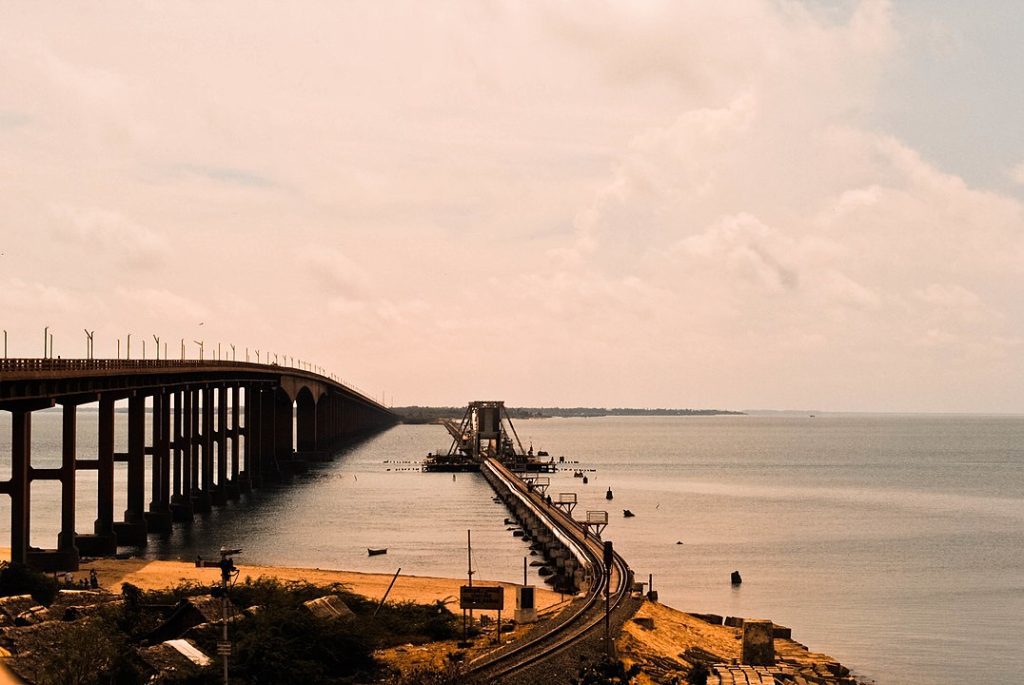
One of the longest bridges in southern India is the Annai Indira Gandhi Street Bridge. For the benefit of city dwellers, a massive causeway that was constructed across the water connects the Rameswaram island to the neighborhood. Due to its proximity to Pamban and distance of 7 km from Rameswaram town, it is often referred to as the Pamban bridge.
5. Adam’s Bridge:
One of the most popular tourist destinations is located in the Palk Strait, off the southernmost tip of India. The bridge’s narrow roadway crosses a large body of water. As one of the oldest constructions in the world and the source of many amazing tales, it is a special location to visit in Rameshwaram.
The “Ram Setu” or “Adams bridge,” also known as the bridge Ram built to Sri Lanka, is a submerged passageway.
4. Jagannatha Puri
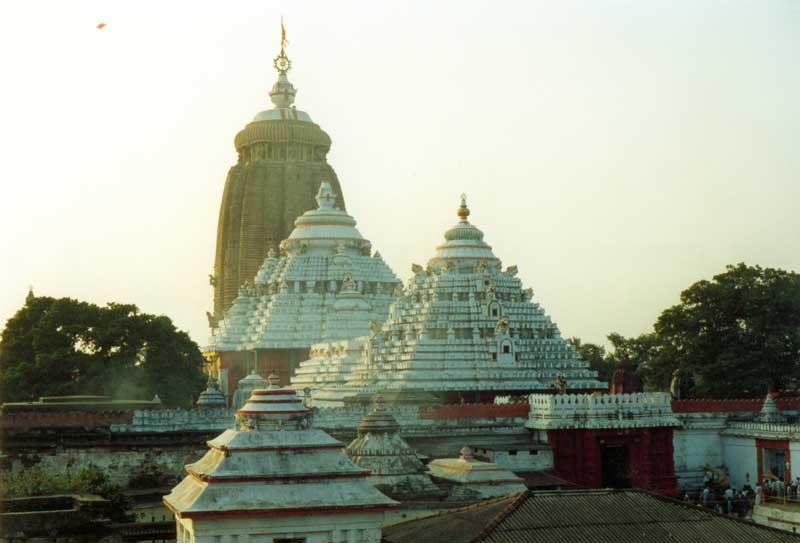
Puri is in the state of Odisha on the eastern coast of India and is home to the Jagannath Shrine, a significant Hindu temple dedicated to Jagannath, a manifestation of Vishnu and one of the trinities of supreme divinities in Hinduism. Anantavarman Chodaganga, the first ruler of the Eastern Ganga dynasty, started construction on the current temple in the eleventh century on the site of other temples in the compound but not the primary Jagannatha temple.
The annual Ratha Yatra, or chariot festival, at the Puri temple is well-known for featuring the three main deities being hauled by enormous, ornately decorated temple cars. The picture of Jagannath is made of wood and is painted, in contrast to the stone and metal icons found in most Hindu temples.
Deities Jagannath, Balabhadra, and Subhadra are all revered at the temple. The idols of Sudarshana Chakra, Madanmohan, Sridevi, and Vishwadhatri, as well as their deities, known as daru, are housed in the inner sanctum of the temple and were carved from holy neem logs. The gods wear various jewels and have varying attire depending on the season.
The worship of these gods predates the construction of the temple and might have started in an old tribal shrine.
History:
Anantavarman Chodaganga, a king of the Ganga dynasty, rebuilt the temple in the 12th century CE, according to the Kendupatna copper-plate inscription of his descendant Narasimhadeva II.
Anantavarman was a Shaivite before he invaded the Utkala region (where the temple is located) in 1112 CE, at which point he converted to Vaishnavism. An inscription from between 1134 and 1135 CE records his gift to the temple.
Consequently, the beginning of the temple’s construction must have occurred after 1112 CE.
One of the most significant Hindu pilgrimage destinations is the Jagannath Puri Temple, which is a stop on the Charm Dham itinerary. Although the majority of the shrine is still below, what is visible is a beautiful example of Oriya architecture.
You can explore the beaches, shopping, and historic temples of Puri to your heart’s pleasure. Don’t forget to see Orissa’s landmarks, like the Nandankanan Zoological Park, Konark Sun Temple, and Jagannath Temple. Numerous tourists from all over the world go to Puri year-round because of its famed beaches and religious magnificence.
Arti Timing:
Dwarpitha and Mangal Aarti at 5 A.M
Sandhya Aarti and Dhupa – 7 P.M. to 8 P.M.
Places to visit near Jagannath temple:
Lord Jagannath Puri’s home is famous for more than only its beautiful interior and attracts millions of tourists from all over the world. Instead, this wildly popular city is also well known for a variety of amazing places that are found nearby and make for great vacations.
Puri is quite close to many picturesque locations that are home to significant landmarks that reflect the history and natural beauty of the state. There are many tourist destinations close to Puri that might suit your tastes and guarantee you an unforgettable vacation, whether you’re a nature lover or a spiritual seeker.
1. Konark:
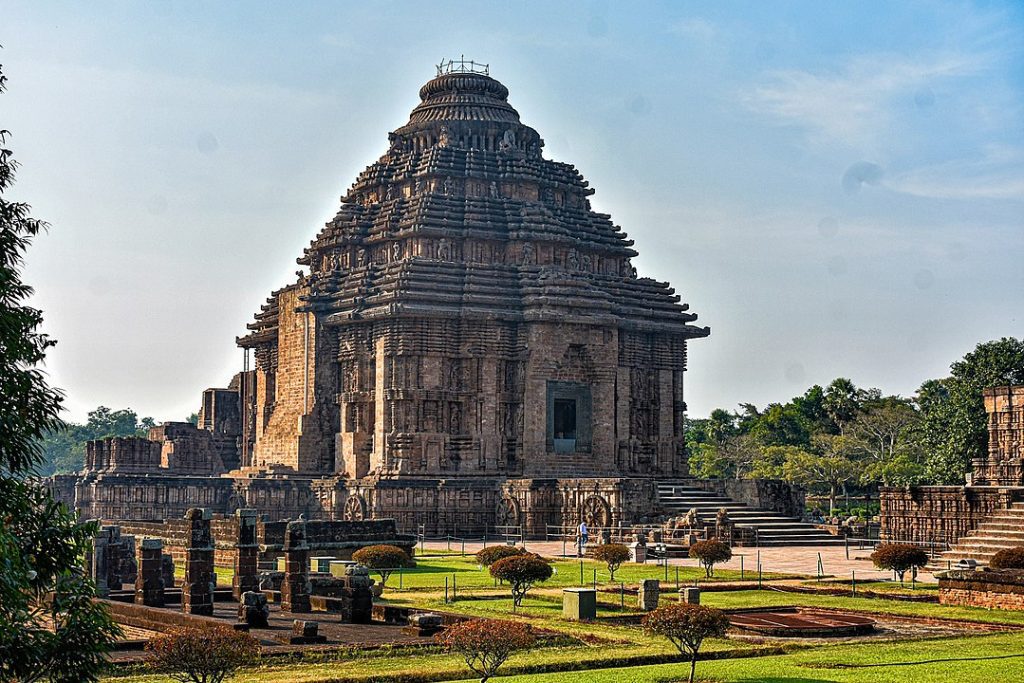
The 13th-century Sun Temple, one of the most remarkable buildings in the nation, is located in Konark. This UNESCO-protected site features a representation of the Sun God’s chariot, which is pulled by seven horses and has 12 pairs of exquisitely carved wheels. The building was built using conventional Kalinga architecture, and the vimana, shikara, audience hall, dance hall, etc. are still evident.
Watersports at the stunning Chandrabhaga Beach are among the best things to do in Konark. A beachside bonfire can be used to cap off a day of swimming, snorkeling, and surfing.
2. Chilika Lake:
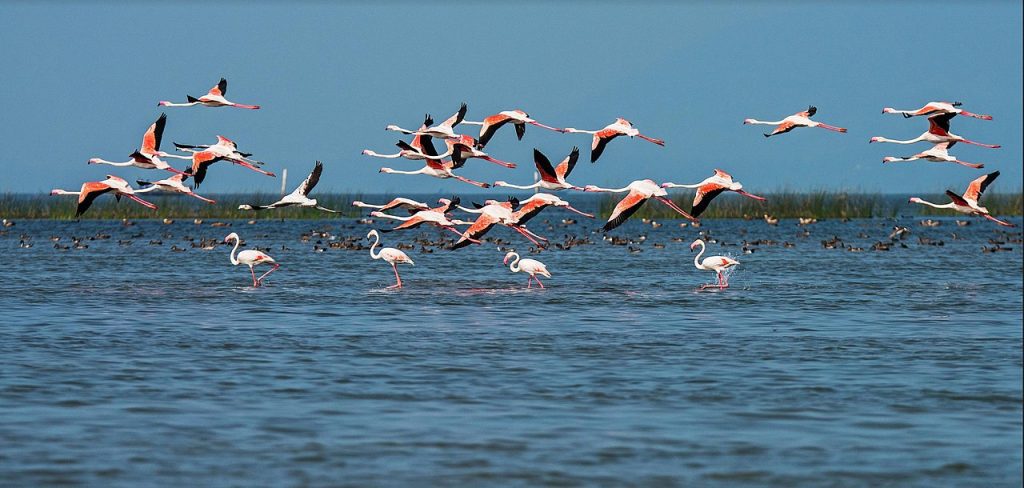
Chilika Lake, Asia’s largest saltwater lake, is a paradise for wildlife enthusiasts and bird watchers. This lake’s pear shape protects a few little islands, and its shoreline is home to several fisheries.
One of the best ecosystems on earth, Chilika Lake is home to numerous species of flora and fauna. Even the sunrise and sunset views over this picturesque lake are some of the best in the entire country. One of the most exotic places to visit near Puri is Chilika Lake, which offers a variety of exciting and fun activities.
3. Bhubaneswar:
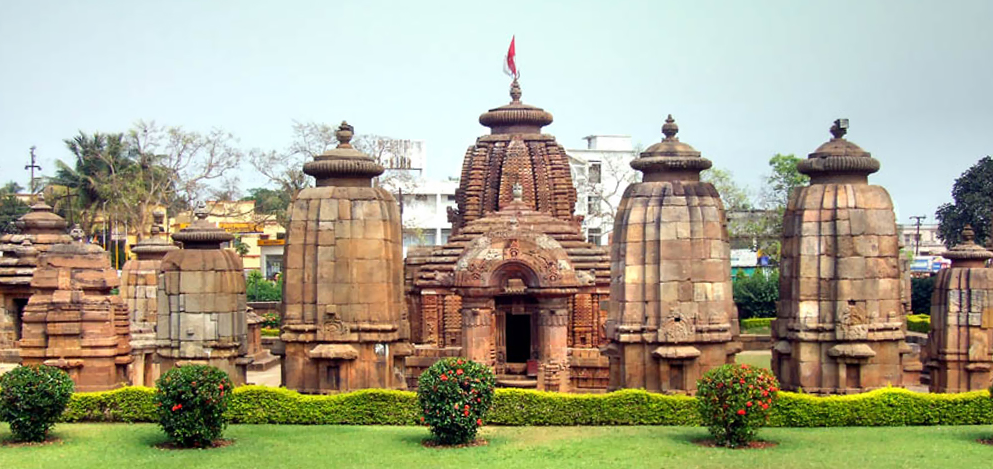
Bhubaneswar, also referred to as the “City of Temples,” holds a significant place in Indian history. King Sisupala ruled over this area, which is better known as the state capital of Odisha, for a sizable period of time.
The ruins of Sisupalgarh, which were found nearby Bhubaneswar, may date back even further than the Mauryan Empire. This location, which has a 2000-year-old, rich history, offers the ideal fusion of a primitive world with magnificent temples and beautiful architecture and a modern era with thriving business and trade.
When should you go for Char Dham Yatra?
April through the first half of June are the best months to visit Char Dham. This time spans the early and middle summers when the weather in Char Dham is suitable for travel. Because of the hazardous terrain and risk of landslides, it is advised against visiting Char Dham from June to September.
Because the Char Dham is spread across four corners of India, it is not possible to visit all of them at once. Make individual plans for fun and affordable vacation.
And for the most picturesque and exciting side adventures, one can also travel to Char Dham via road. You can book your car via BookCheap for an affordable and exciting trip.
Book Now at 9263774117
